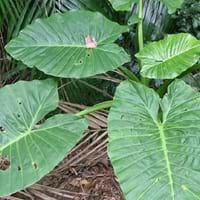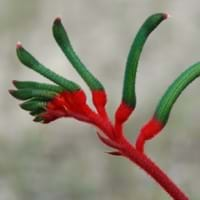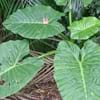Life Span
Perennial
Perennial
Type
Tender Perennial
Houseplant
Origin
Southeastern Asia
Australia
Types
Not available
Not Available
Habitat
Rainforest
Dry areas, Temperate Regions, Well Drained
USDA Hardiness Zone
10-15
10-11
Sunset Zone
H1, H2, 22, 23, 24
12, 13, 15, 16, 17, 18, 20, 21, 22, 23, 24
Habit
Arching/Fountain-shaped
Clump-Forming
Flower Color
White, Green
Red, Green
Flower Color Modifier
Not Available
Bicolor
Fruit Color
Red, Orange
Not Available
Leaf Color in Spring
White, Yellow, Red, Green, Purple, Blue Green, Dark Green
Dark Green
Leaf Color in Summer
White, Yellow, Red, Green, Purple, Blue Green, Dark Green
Dark Green
Leaf Color in Fall
White, Yellow, Red, Green, Purple, Blue Green, Dark Green
Dark Green
Leaf Color in Winter
White, Yellow, Green, Blue Green, Dark Green
Dark Green
Leaf Shape
Spade shaped
Linear
Plant Season
Spring, Summer, Fall, Winter
Spring, Summer, Fall
Sunlight
Full Sun, Partial Sun, Partial shade, Full Shade
Full Sun, Partial Sun
Type of Soil
Loam, Sand
Loam, Sand
The pH of Soil
Acidic, Neutral, Alkaline
Acidic, Neutral
Soil Drainage
Well drained
Well drained
Bloom Time
Indeterminate
Spring, Late Spring, Late Summer, Early Fall
Tolerances
Drought, Full Sun
Drought
Where to Plant?
Ground, Pot
Container, Ground, Pot
How to Plant?
Rhizome division, Seedlings
Seedlings, Tissue culture
Plant Maintenance
Medium
Medium
Watering Requirements
Keep the Soil well drained
Average Water Needs
In Summer
Lots of watering
Lots of watering
In Spring
Moderate
Moderate
In Winter
Average Water
Average Water
Soil pH
Acidic, Neutral, Alkaline
Acidic, Neutral
Soil Type
Loam, Sand
Loam, Sand
Soil Drainage Capacity
Well drained
Well drained
Sun Exposure
Full Sun, Partial Sun, Partial shade, Full Shade
Full Sun, Partial Sun
Pruning
Cut or pinch the stems, Remove damaged leaves, Remove dead branches, Remove dead leaves
Remove damaged leaves, Remove dead branches, Remove dead leaves
Fertilizers
slow-release fertilizers
All-Purpose Liquid Fertilizer
Pests and Diseases
No serious insect or disease problems
fungus
Plant Tolerance
Drought, Full Sun
Drought
Flowers
Insignificant
Showy
Flower Petal Number
Single
Single
Showy Bark
Not Available
No
Foliage Texture
Bold
Medium
Foliage Sheen
Glossy
Matte
Attracts
Ants, Bees, Flies, Not Available
Hummingbirds
Allergy
Poisonous, poisonous if ingested, Skin irritation
Eye irritation, Skin irritation
Aesthetic Uses
Ground Cover
Showy Purposes
Beauty Benefits
Skin Problems
Not Available
Environmental Uses
Air purification
Air purification
Medicinal Uses
Insect Bites
Not Available
Part of Plant Used
Fruits, Leaves, Sap, Stem
Buds, Flowers
Other Uses
Food for animals, Food for insects, Leaves are used as mosquito repellent
Cut Flowers
Used As Indoor Plant
No
No
Used As Outdoor Plant
Yes
Yes
Garden Design
Bog Garden, Container, Feature Plant, Tropical, Water Gardens
Container, Cutflower, Foundation, Groundcover, Mixed Border, Rock Garden / Wall, Tropical
Botanical Name
Alocasia brisbanensis
ANIGOZANTHOS manglesii
Common Name
Alocasia, Elephant Ear, native lily, cunjevoi
Mangles' Kangaroo Paw, Red and Green Kangaroo Paw
In Hindi
Alocasia
Mangles Kangaroo Paw
In German
Alocasia
Mangles Kangaroo Paw
In French
Alocasia
Mangles Kangaroo Paw
In Spanish
Alocasia
Mangles Kangaroo Paw
In Greek
Alocasia
Mangles Kangaroo Paw
In Portuguese
Alocasia
Mangles Kangaroo Paw
In Polish
Alocasia
Mangles Kangaroo Paw
In Latin
Aglaonema
Mangles Kangaroo Paw
Phylum
Magnoliophyta
Not Available
Class
Liliopsida
Not Available
Order
Arales
Commelinales
Family
Araceae
Haemodoraceae
Genus
Alocasia
Anigozanthos
Clade
Angiosperms, Monocots
Angiosperms, Commelinids, Monocots
Tribe
Colocasieae
Not Available
Subfamily
Aroideae
Conostyloideae
Season and Care of Alocasia and Mangles kangaroo paw
Season and care of Alocasia and Mangles kangaroo paw is important to know. While considering everything about Alocasia and Mangles kangaroo paw Care, growing season is an essential factor. Alocasia season is Spring, Summer, Fall and Winter and Mangles kangaroo paw season is Spring, Summer, Fall and Winter. The type of soil for Alocasia is Loam, Sand and for Mangles kangaroo paw is Loam, Sand while the PH of soil for Alocasia is Acidic, Neutral, Alkaline and for Mangles kangaroo paw is Acidic, Neutral.
Alocasia and Mangles kangaroo paw Physical Information
Alocasia and Mangles kangaroo paw physical information is very important for comparison. Alocasia height is 90.00 cm and width 90.00 cm whereas Mangles kangaroo paw height is 30.00 cm and width 40.60 cm. The color specification of Alocasia and Mangles kangaroo paw are as follows:
Alocasia flower color: White and Green
Alocasia leaf color: White, Yellow, Red, Green, Purple, Blue Green and Dark Green
Mangles kangaroo paw flower color: Red and Green
- Mangles kangaroo paw leaf color: Dark Green
Care of Alocasia and Mangles kangaroo paw
Care of Alocasia and Mangles kangaroo paw include pruning, fertilizers, watering etc. Alocasia pruning is done Cut or pinch the stems, Remove damaged leaves, Remove dead branches and Remove dead leaves and Mangles kangaroo paw pruning is done Remove damaged leaves, Remove dead branches and Remove dead leaves. In summer Alocasia needs Lots of watering and in winter, it needs Average Water. Whereas, in summer Mangles kangaroo paw needs Lots of watering and in winter, it needs Average Water.





